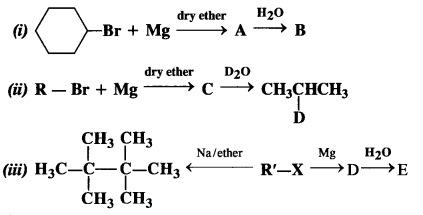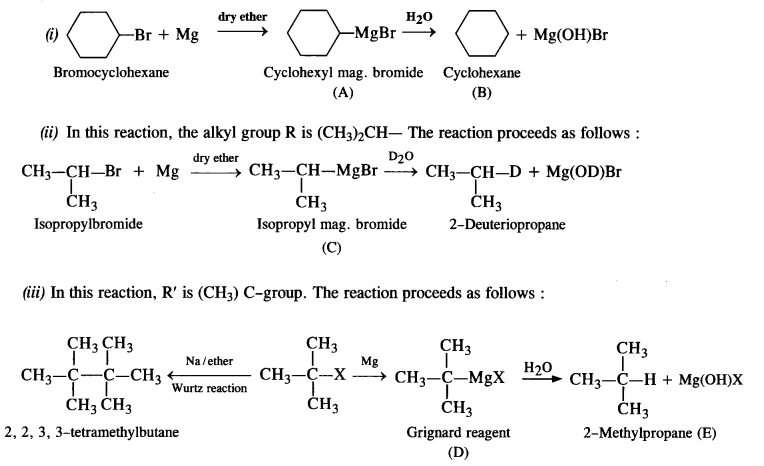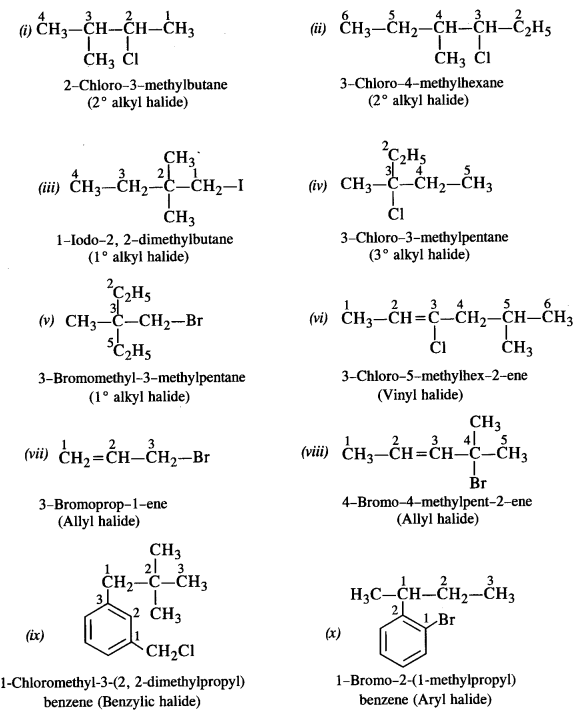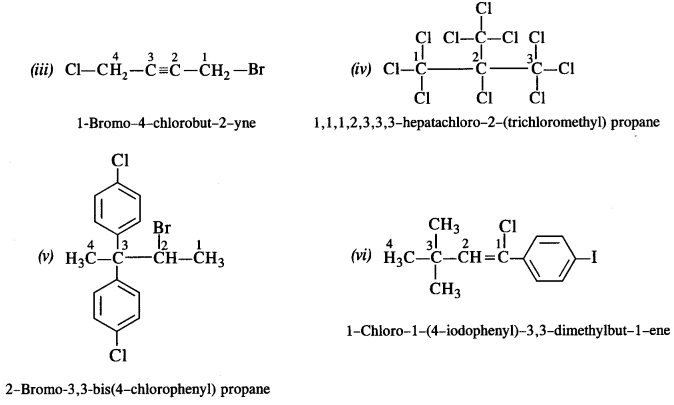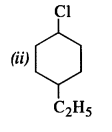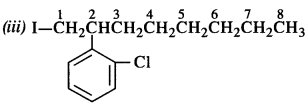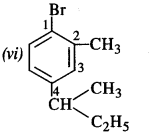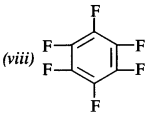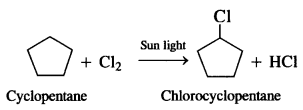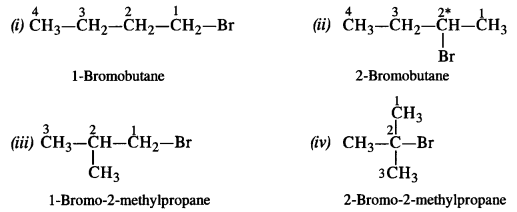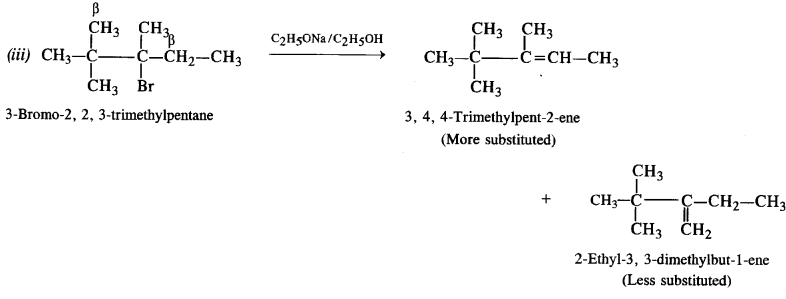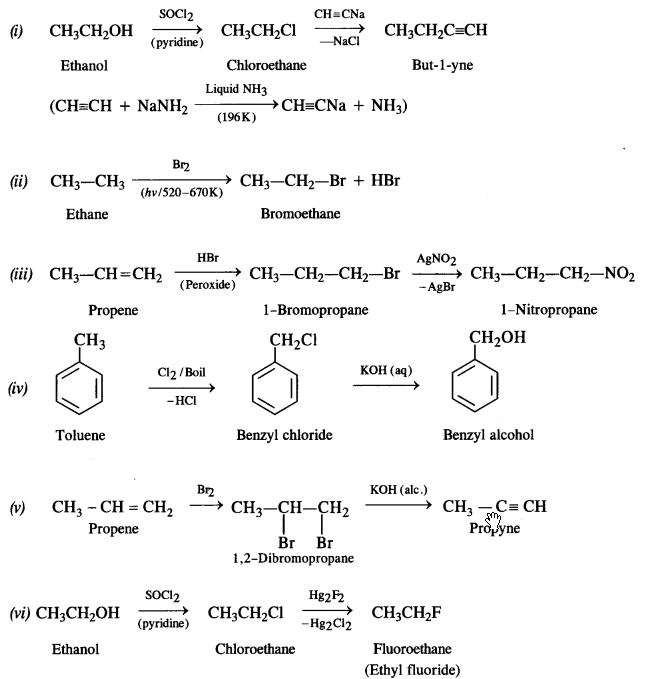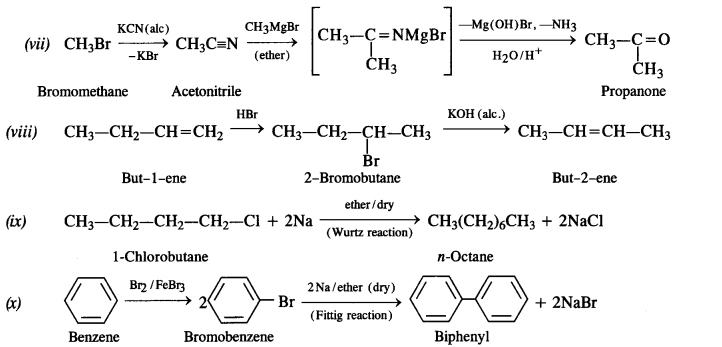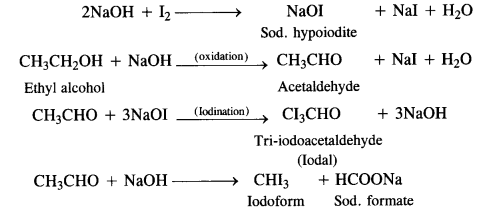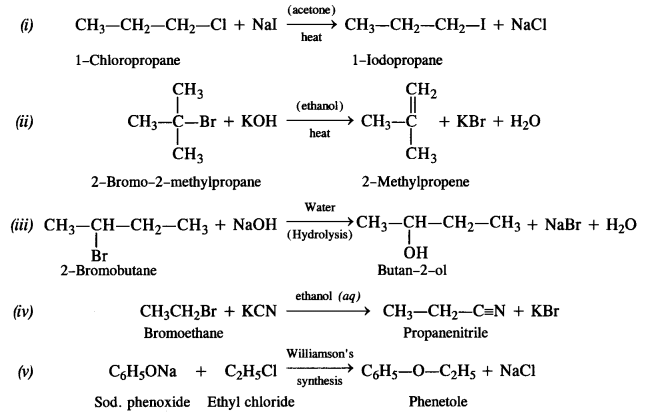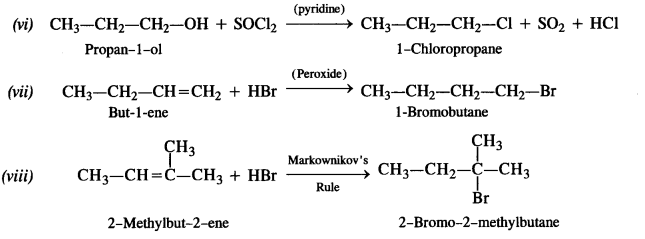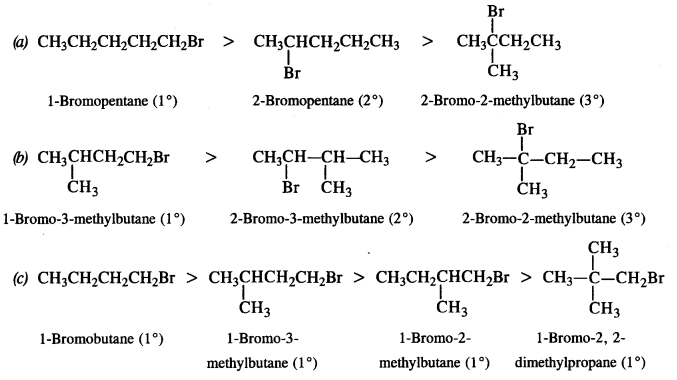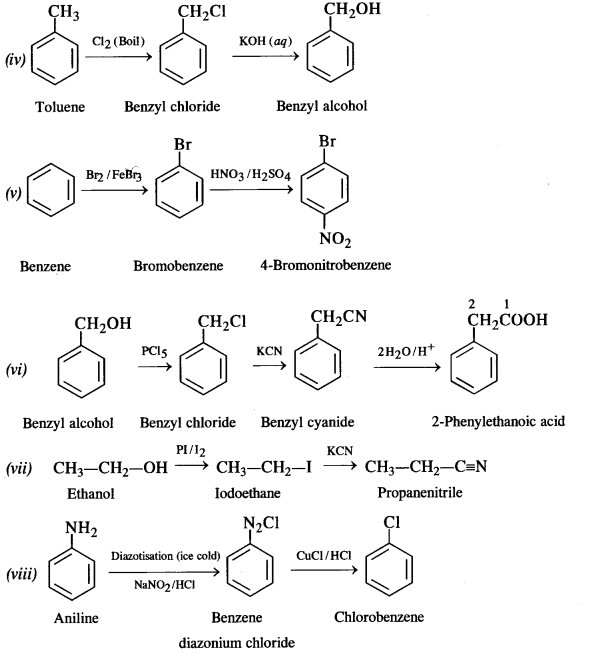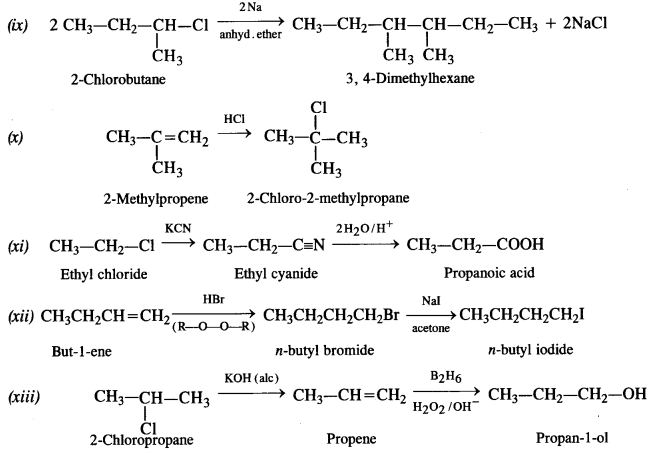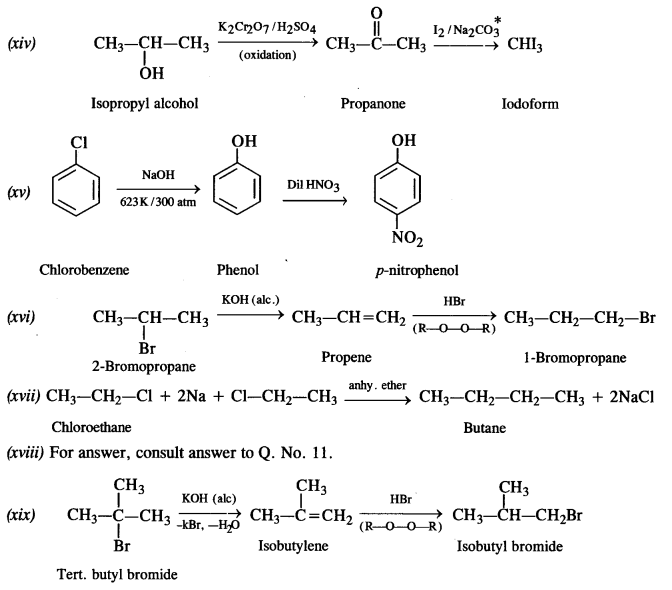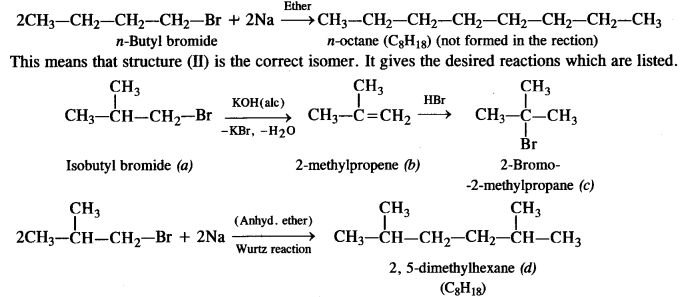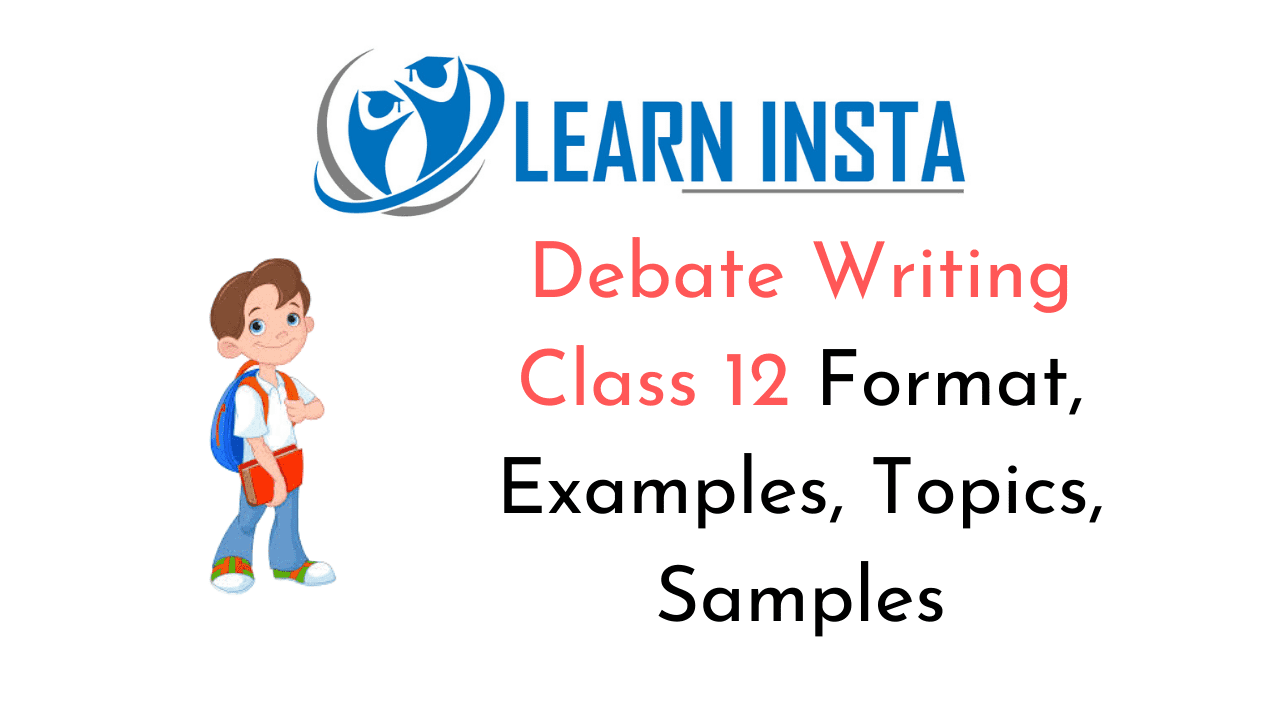
♦ Purpose of Debate:
The purpose of a debate is to show skill and ability in arguing.
This grammar section explains English Grammar in a clear and simple way. There are example sentences to show how the language is used. NCERT Solutions for Class 12 English will help you to write better answers in your Class 12 exams. Because the Solutions are solved by subject matter experts.
Debate Writing Class 12 Format, Examples, Topics, Samples
- Salutation: ‘Respected chairperson, honourable judges, and my dear friends…’.
- Introduction: ‘I am here to present my views for/against the motion…’
- Body of the argument: May include views, facts, rebutting the statements, questions, etc.
- Common phrases: ‘I strongly feel that…’, ‘I would like to draw your attention to…’, ‘May I ask all present…’, ‘I wholeheartedly oppose/support…’, ‘In my opinion…’
Debate is a creative expression of a person’s opinion or a perspective on an issue.
♦ Format (150-200 words)
- Catchy introduction
- Pre-speech note to draw attention of listeners
- Formal address to audience
- Development of the topic
- Adverse effects
- Conclusion
- Formal thanks to audience
♦ Sample Debate:
Question 1.
Should schools promote coaching institutes? Taking a cue from the points given below
and using your own ideas, write a debate speech for or against the topic in about 150-200 words.
- Despite CBSE’s ban, coaching centres running classes in schools
- Teachers from coaching institutes teach subjects like physics, chemistry and mathematics, English and physical education continue to be taught by the school faculty.
- Classes in separate sections from 8 a.m. to 12 noon for the CBSE and competitive
examinations. (10 marks) [CBSE Sample Paper 2017]
Answer:
Respected Chairperson, honourable member of the jury, my worthy opponents and dear audience, I, Bhavik Gautam, would like to speak for the motion, ‘Should school promote coaching institutes’. CBSE has banned coaching centres running classes in school, yet it seems to flourish in both public and private schools as many parents and guardians are very much in favour of it. Firstly, if we look into the monetary aspect from the point of view of both, then we find that both benefit from it by saving on the huge fee and regular conveyance attached to this.
Time management is the second factor. Coping with CBSE syllabus and that of the competitive exams, yet maintaining the required attendance percentage and keeping good health comes after. It is not possible for all parents to judge on the quality of the faculty or time of most advertised institutes. Now, it is the school’s responsibility to see to these factors and provide the best service at affordable cost. The safety of the students who willingly join these extra or coaching classes beyond regular school schedule is also their choice. Competition in some fields is so much that there can hardly be an alternative to this for those who are ambitious and make it to the best educational institutions.
I hope I have been able to get my point of view across to you by now.
Thank you
Question 2.
‘Private cars should be banned in the congested commercial areas of the cities.’ Write a debate in 150-200 words either for or against the motion. (10 marks) [CBSE Paper 2017]
Answer:
Respected Chairperson, honourable members of the jury, worthy opponents and dear audience. Today I, Ravi, would like to express my views for the motion, ‘Private cars should be banned in the congested commercial areas of the cities’. For personal well manages economic policies and various schemes floated for consumers, there are more private cars now per family than earlier days. The UN census reveals approximately 7,00,000 people in congested commercial areas succumbing to various types of respiratory diseases. The maintenance of some of the best breads are not up to the mark and the size of vehicles are many a time unwieldy.
Some individuals regard it as a status symbol to flaunt their vehicles according to their rise in income. This often results in parking spaces encroaching upon highways, where trucks and public Vehicles’ movements get clogged and bottlenecks are created. India does not have areas demarcated exclusively for commercial transport movement zone, though a time had been fixed to ease out complication for traffic control. Wholesale and retail markets are most of the time obsession for a chunk of consumers, who buy in bulk. Hence, the incredible traffic jams that occur on weekdays add to the plight of pedestrian, too who helplessly watch the two wheelers taking to the footpaths to avoid the hour long wait or snail-slow movement of traffic.
It is not only the main towns or metropolises that face this situation, but extended towns and districts too share the same fate. If there is any accident, inadvertent heated exchanges, medical help required or if the police have to intervene to set things right, nothing really works out because of this mesh of private vehicles queued up condition. The other aspect is the infrastructure in Indian commercial complexes that is far below international recommended norm. Therefore, unless situations are supportive, private cars should be banned from entering or parking in commercial areas.
Question 3.
‘Our large population is not a cause of poverty but an asset, a resource.’ Write a debate in 150-200 words either for or against the motion. (10 marks) [CESE (Delhi) 2017]
Answer:
Respected Chairperson, honourable members of the jury, my worthy opponents and dear audience, today I, Sasank, would like to express my views against the motion, ‘Our large population is not a cause of poverty but an asset, a resource.’
Be it IT jobs, sales, HR, marketing, job hunters frantically crowd at Job Fairs and Career seminars, the literates skilled and semi-skilled ones try their hand digitally or knock at various doors for the so-called interview. Unemployment is, however, a serious social issue and a major challenge for the state and central governments. Though unemployment rate has fallen from 5.20 to 4.90 now, the agricultural sector and agro based industrial sector have a tough challenge.
With the population reaching to 1.3 billion and more and more hungry mouths to feed, natural and man-made resources unable to cope with rising demand for food, shelter and clothing, poverty glares at our face even in a supersonic age. 22% of our population is still below poverty level according to official statistics. Theft, lechery, kidnapping, rape, robbery, and burglary are in most cases committed by migrant labourers, living in slums on the outskirts of town and cities. Many a time, this teeming, unregistered population find their names in the voters’ list or used as muscle power by unethical political leaders creating a class of hoodlums and assassins, etc.
Question 4.
“It is cruel to put stray dogs to sleep.” Write a debate in 150-200 words either for or against the motion. (10 marks) [CASE (AI) 2017, 2019]
Answer:
Respected Chairperson, honourable members of the jury, and my worthy opponents. Today, I, Karan, would like to express my views for the motion, ‘It is cruel to put stray dogs to sleep.’ It’s all in the mind and of course one’s attitude and upbringing with respect to dogs. The mongrels and curs are looked down upon, pelted with stones, kicked or beaten up just because they do not carry a certificate to prove their breed. Initially, for a couple of ‘chapattis’, stale bread or leftover food they practise utmost loyalty to the street, lane, pocket in which they are born and grow up naturally.
Let a stranger try sneaking in quietly, or ragpickers try their hands-on stealth, these stray dogs are the first to set a general alarm, linking up with their kith and kin till the locality is aroused to caution and acceptance. However, some people do not approve of the natural behaviour of these dogs that only bark but not bite. It is true that in some localities, due to the quality of food and care that they receive regularly, these mongrels do look presentable and often surpass the well bred domesticated ones in some homes, hence posing a threat by appearance to those allergic to dogs but this by no way means that authorities have to be intimated and dog catchers fetched to take away these loyal protectors or guards of the locality and finally be put to sleep.
Dogs by nature are harmless and man’s best friend. We need to be less hyper and balanced to co-exist with them who render unpaid loyal service day and night till their last breath and express their gratitude to simple look or a polite tone as a sign of acceptance of their existence. Hence, I hope killing of stray dogs, even legally should be banned.
Question 5.
“A career counsellor (not you, yourself) is the best person to guide you in the choice of a career.” Write a debate in 150-200 words either for or against the motion. (10 marks) [CBSE (AI) 2017]
Answer:
Respected Chairperson, honourable judges, my worthy opponents and dear audience, today, I, Varun, would like to speak in favour of the motion, ‘A career counsellor is the best person to guide you in the choice of a career’.
Career counsellors use aptitude and achievement tests to help us evaluate our interests, skills and abilities, our backgrounds, education, training and so on to help us develop realistic goals. They also teach us job searching skills like interviewing and networking. They aid us with a career choice when we are flummoxed or frustrated with too many options, especially these days before us. It is they who with their exposures and experience guide us in the best possible directions.
After assessing us through tests, they try matching us with a field suitable for our skills and personality creating the most profitable match possible in terms of job satisfaction and monetary benefits. They often work late hours to ensure a thorough and satisfactory result. Hence, if we wish to have a scientific approach to an appropriate choice of character to prosper and progress in life, then career counsellors are indispensable for us.
Question 6.
‘Social media (Facebook, Twitter, etc.) is being used to create disaffection in society.’ Write a debate in 150-200 words either for or against the motion. (10 marks) [CBSE (F) 2017]
Answer:
Dear friends, today, I stand before you to argue in favour of the motion, ‘Social media is being used to create disaffection in society’. These days people spend most of their time on social media, updating all the events of their lives. Social networking on the internet is important currently because the internet is the place to be for everything.
People head to the internet to shop, to sell things, to meet others and to find what they’re looking for. The internet is full of social networking sites and tools that make it very easy to connect with others. For them, it has become more important to connect to more and Ynore people online, rather than make actual connections in person.
It is a dangerous place for the young adults or teenagers to be. For them, it is a time to explore the world. But instead, they get addicted to social media. One can never be sure of what the person is behind the profile that he/she has put up. We’ve even had people committing suicides over rumours spread over some networks about their identities. Another trouble with social media is that it makes us live for others. We want to have more and more friends on our lists, so the world can see, and we can boast about our ‘sociability’.
This gives them undue pressure and stress. It has totally changed the meaning of ‘friendship’. Now, people have more friends with weaker bonds, than the other way around. People with camera phones taking their own pictures with friends they go out with, so they could flaunt it on social media. Social networking is worse than good, and uglier than both. Although it gives us a chance to know people from all over the world and make friends, we are losing our individuality and our identity.
Question 7.
‘Gyms and fitness centres have reduced the importance of exercise in the park.’ Write a debate in 150-200 words either for or against the motion. (10 marks) [CBSE (F) 2017]
Answer:
Dear friends, today, I stand before you to argue against the favour of the motion, ‘Gyms and fitness centres have reduced the importance of exercise in the park’. Nowadays, increasing number of people are going to the gym more out of convenience and necessity to keep themselves fit, since it is difficult to find open space to walk in the present model of urbanisation.
Moreover, exercising in gym has both its pros and cons, whereas exercising in park is loaded with health benefits provided one can find in the vicinity. Though doing gym is more attractive to the young generation as it gives a better physical health, but it is exercising in the parks which give both physical and mental health. Fitness centres and gyms have also become a quotient of status in the society. People going to gyms are looked upon, whereas those going to parks are looked down upon.
Another major reason for opting gym over the park is the convenient time for exercise. In today’s busy world, people don’t have much time for health. By the time one gets back home, it is already dark and closing time for parks. So, gyms are the best alternatives available. Even though parks are the best medium to connect with nature and be fit, people are shifting to gyms.
Question 8.
‘Homes for the aged is a necessity in India.’ Write a debate in 150-200 words either for or against the motion. You are Shivam/Shivani. (10 marks) [CBSE Paper 2018]
Answer:
Honourable Jury members, teachers and my dear friends. A very good morning to all of you. Today, I am here to share my views on the topic, “Are old age homes necessary in India?” In today’s world, old age homes are necessary specially in India. Parents educate their children and then they travel to different places and countries which may not suit their parents. Hence, someone looks after their needs. ‘Homes’ here, does mean for the people who are deserted by their children but the people where children are working either abroad or somewhere else where they can’t take them along. They are ready to pay any amount for their welfare.
In another case, if they are abandoned by their children even then it is beneficial for old people as Old Age Homes provide them with security, physical and medical stability. People can play, interact and relax at the same time. I feel, we need old age homes to give some people shelter and to others the time of their lives.
Question 9.
“Everyone should become vegetarian,” Write a debate in 150-200 words either for or against the motion. (10 marks) [CBSE Paper 2018 (C)]
Answer:
Good morning! Respected teachers and my dear friends. Today, I got the opportunity to speak against the motion, “Everyone should become Vegetarian”. Vegetarians are likely to face some difficulties, if they do not eat meat. One of the difficulties is that the individuals have to pay attention to choose the correct balance of vegetarian food that would meet energy needs. If they are in a wrong way of choosing types of vegetables, this may lead to malnutrition.
Benefits of non-veg is that high biological value protein is obtained from this diet. It is a main source of vitamin B complex, i.e., B12. It is rich in certain amino acids which the . body cannot produce on its own. The risk of anaemia is reduced. According to the medical science, a diet constituting of sea food like fish, and eggs sharpen our intellect and promote the smooth functioning of our brain. This ultimately accelerates our wisdom. Non-vegetarians have a wide range of food to choose as in some countries, it is difficult to find the vegetarian food.
Question 10.
The government has banned the use of animals in the laboratories for the purpose of dissection. Write a debate in 150-200 words either for or against this decision. (10 marks) [CBSE (AI) 2015]
Answer:
Respected Chairperson, honourable judges, and my dear friends, I stand here today, to speak for the motion, ‘Ban the use of animals in the laboratories for the purpose of dissection’. Animal dissection in labs is an unethical and unnecessary part of the secondary school biology curriculum. The millions of animals that are dissected each year in education systems are subjects of severe animal abuse. Animals are often stockpiled on top of one another and shipped in crowded containers with no temperature regulation, food, or water. Animals are treated unjustly, and by conducting dissections, we fund and promote the abuse of animals.
Millions of frogs are brought every year from the wild for dissection purposes. This means that, along with all of the other ways humans are impacting frog populations, such as global climate change and pollution, humans are also destroying their populations. In the school curriculum, children are taught about the biodiversity crisis and all of its negative aspects. However, at the same time, students are encouraged to contribute to it. By continuing with animal dissections, school boards are promoting the mistreatment of the animals.
It is not necessary for students to dissect animals in order to see what the insides of the hnimals look like. If a student were to pursue a career in a field where this is needed, they would have the opportunity to dissect human cadavers in University. However, very few students who participate in these labs in high school will actually go down these career paths. The only thing that an animal dissection lab teaches students is that an animal’s life is disposable and unimportant.
Buying animals for all biology classes can be quite costly. The high school dissection sets are also costly and are used only once or twice. The animals used for dissection are also very costly. Children can learn dissection from programs on Discovery Science where programs explaining detailed dissection are shown. Many educational CDs showing dissections are also in the market. The schools can rather take help of such technology to make the students understand how dissection takes place. This way, not only a lot of money can be saved, but also a lot of innocent animal lives can be saved.
Thank you
Question 11.
Some people feel that electronic media (TV news) will bring about the end of print media (newspapers). What are your views on the issue? Write a debate in 150-200 words either for or against this view. (10 marks) [CBSE (AI) 2015]
- use of visuals on TV
- authentic and fast
- not enough news for 24-hour telecast
- may fabricate news
- become repetitive and dull
- even scandals become news
- print media – time tested
- analysed, verified news
- editorial comments
- cater to all interests
Answer:
Respected Chairperson, honourable judges, and my dear friends, I stand here todav to speak against the motion, ‘Electronic media will bring about the end of print media’. We will keep on buying newspapers, that’s for sure. I feel that it is absurd to think that there will only be online newspapers rather than a variety of options in the future. Though I read e-newspaper every day, I do not feel satisfied till I have read a hard copy of a newspaper.
In fact, there are many like me. It is nice to read updated news but even that can be a problem. Often the reliability of the news is not checked and rumours get printed. Sometimes, reading online can also be a problem. I remember how I was reading an interesting novel on the train, on my iPad and because I hadn’t charged it, the battery ran out. It was so irritating because I had reached almost the end and also because it was a mystery novel. A book with me made my day, though earlier I was cribbing because it felt too heavy for a one-day journey.
One of the things that drives technological changes, such as the proposition that newspapers will go online is not so much our ability to enforce that change as technologists, but our desire as consumers to see it happen. I’m neutral on whether I read my stuff on a digital machine such as a Kindle or an iPad, online or pre-downloaded, or whether I read it on paper. But there are people who want the choice and there is a generation that doesn’t want to adopt the digital newspaper. There are people for whom, because of the upfront cost of the tablet technology, the idea of the digital newspaper will never be right.
It’s not really a question of the so-called authority of paper over online journalism. But the real issue is what the consumer wants. In the past, despite the leading-edge technology available, the public rejected laser disc, minidisc and digital audio tape. People just didn’t want it, and I think that is what will happen with this question. We’ve had newspapers a long time and they aren’t going away in the near future.
Thank you
Question 12.
Consumerism is- increasing day by day. Luxuries of yesterday have become necessities of today. The result is that the more we want the more miserable we become. Write a debate in 150-200 words on ‘The only way to minimise human suffering and pain is to control our needs’. You are Navtej/Navita. (10 marks) [CBSE (AI) 2015]
Answer:
Respected Chairperson, honourable judges, and my dear friends, I stand here today to speak for the motion, ‘The only way to minimise human suffering is to control our needs’. Even when people have all they need, they feel deprived. Though they have money, some people stare into empty cupboards or an empty refrigerator bemoaning their circumstances.
Modern consumerism is, in part, a product of our instinct to cope with inner emptiness. Consumerism creates the illusion that we’re rich. This is facilitated by credit cards where one is allowed to make purchases beyond the income level. Advertisements also reshape our desires and push us into buying things which we might not need. We are driven to create the illusion of a pain-free life, full of choices that make us feel in control.
We need multiple choices for each and every thing, so that we feel like kings of the universe. We need faster pain relievers, appliances to take away all inconvenience, and communication devices to foster immediate exchange. All of these create the illusion of complete pleasure at our fingertips, with none of the hassle of pain. When we are ruled by this kind of physical materialism, we identify ourselves by what we have.
Since human ego is never satisfied, consumerism grows. Increased consumerism evidently comes at a steep price. People are incurring debt and working longer hours to pay for the high-consumption lifestyle, consequently spending less time with family, friends, and community organisations. In the rat race to earn more, our health gets affected and we feel stressful. In rampant consumerism, we’ve created a monster with a huge appetite for the planet’s natural resources. It’s depleting and polluting the planet, impoverishing us and future generations. Excess consumption can be counterproductive. The irony is that less needs i.e., being satisfied can actually cure some of these problems.
Thank you
Question 13.
Migration from villages to cities has led to the spread of urban slums. People living %in these slums lead a miserable life. Economic disparity leads to the problems of law and order. Write a debate in 150-200 words on ‘Solution to the problem of misery in the urban slums lies in creating jobs in the villages’. You are Navtej/Navita. (10 marks) [CBSE (AI) 2015]
Answer:
Respected Chairperson, honourable judges, and my dear friends, I stand here today to speak for the motion, ‘Solution to the problem of misery in the urban slums lies in creating jobs in the villages’. The vast majority of Indians, live in villages, and eke out a meagre existence from agricultural related labour. We tend to forget the fact that our economic prosperity and our lives in urban India are correlated.
Therefore, if the goal is India’s economic prosperity, somehow the 700 million living in some 600,000 villages of India have to have the same option of living and working in urban India on jobs in non-agricultural sectors. Do we want a future where the majority of Indians is urbanised and is engaged in highly productive non-agricultural sectors? We can choose, and having chosen, we can actually make that future happen.
I believe that to prevent migration from villages to cities, we need to carry out equitable development of rural areas. Instead of only creating job opportunities, Government must improve the quality of slums. Government should also ensure compulsory service in villages for its employers. This would reduce the burden on the city and also help these people explore the possibility of living in the village.
Adoption of villages by corporate would also help. Providing self-employment opportunities to villagers is also a solution. Setting up small-scale industries would help reduce the misery in the urban slums by creating multiple job opportunities. Only when these steps are taken, we can reduce the migration from villages to cities, thereby reducing the spread of urban slums.
Thank you
Question 14.
‘The policy of reservation of seats for admission to the professional courses is good for the deprived sections of society.’ Write a debate in 150-200 words either for or against the motion. (10 marks) [CBSE Delhi 2016]
Answer:
Dear friends, today, I stand before you to argue in favour of the motion, ‘The policy of reservation of seats for admission to the professional courses is good for the deprived sections of society’. These days the demand for professional courses is on the rise. Professional courses have become a way of life. These courses guarantee jobs and are usually short time. All this has led to a sudden upsurge of such courses. We see every student rushing after these courses.
Since these courses are so specific, they are highly priced too. Students who are rich can easily pay for the course and get a job. But what about the poor students. For them getting a job is equally important. Many parents in the poor homes pay for their child’s education by doing two-three jobs. Seeing the importance and popularity of professional courses, I think it would be good to have a policy of reservation of seats for admission to such courses for the deprived sections of society. Only then, I feel can equality be maintained.
Thank you
Question 15.
‘Rising prices can be controlled only by the government.’ Write a debate in 150-200 Words either for or against the motion. (10 marks) [CBSE Delhi 2016]
Answer:
Honourable Principal Sir, respected teachers and my dear friends. Today, I stand before you to put my views for the motion, ‘Rising prices can be controlled only by the government’. India has witnessed huge economic development in the past 10 years, yet we are not able to control inflation. It is sure that something has gone wrong somewhere. There are many reasons for inflation in India. Increase in the cost of living, lack of control and check over government spending, hoarding of essential commodities by greedy traders, absence of an adequate mechanism to control and fix the prices of essential commodities in the market places are some of the reasons. The steep rise in price is not in keeping with the income generated and this disparity is affecting the growth of an individual and, at a higher level, that of the nation.
In order to have an egalitarian society, the government should intervene and defuse the situation before it worsens. It is important that the government put a ceiling to the prices of essential commodities and thus, make it affordable to the common people. The Public Distribution System must be revamped, so that the benefit reaches maximum number of people. Government officials should crack down on such retailers who try to create artificial conditions of lack of commodities, thereby, increasing the price of goods.
Some might say that the government has other important matters to consider than to regulate market rates, others might say that the market should be governed by the principal of demand and supply. However, it is important to remember that the principal duty of the government is towards the public. It is important to do what is best for them. Therefore, I believe that the rising prices can be controlled by the government.
Thank You.
Question 16.
‘The policy of no detention till Class VIII is not in the interest of students.’ Write a debate in 150-200 words either in favour of or against the motion. (10 marks) [CBSE Delhi 2016]
Answer:
Honourable Principal Ma’am, respected teachers and my dear friends. Today, I stand before you to put my views for the motion, ‘The policy of no detention till Class VIII is not in the interest of students’.
Under this policy, the students up to Class VIII are automatically promoted to the next class without being held back even if they do not get a passing grade. The policy was implemented as part of the Continuous and Comprehensive Evaluation (CCE) under the RTE Act in 2010 to ensure all-round development of students. The concept of CCE imported from the West, emphasises on evaluating a child through the year, and not just based on the performance in one or two term exams.
It was found that the detention system led to increased dropouts among students, especially from economically and socially-weaker sections, who cannot afford costly private education. In order to overcome this, the no-detention policy was brought in to provide elementary school children an environment free from fear, anxiety and stress.
This would help the students learn and grow at their own pace. It would also reduce the \indue stress borne by the students due to the increasing competition among students, parents and the educational institutions. I feel that this policy is not in the interest of students. Since all the students are promoted to the next class, irrespective of their learning, it will lead to students developing a lackadaisical attitude towards studies.
It also takes away the difference between good and poor learners, since everyone is treated at par. This policy also does not take into consideration that there can be slow and fast learners. Some students might need more help. However, with this policy, such students cannot be helped, since everyone is the same in the end.
I believe that detention is like a stepping stone to success. It helps students know what is wrong and helps them grow. It is a way of monitoring learners. We need a system of assessment where the learning outcomes are properly assessed. Therefore, I believe that No Detention Policy is a bane for the students.
Thank you
Question 17.
‘Brain drain is not a bane for a developing country like India’. Write a debate in 150-200
words either for or against the motion. (10 marks) [CBSE (AI) 2016]
Answer:
Honourable Principal Ma’am, respected teachers and my dear friends. Today, I stand before you to present my views against the topic, ‘Brain drain is not a bane for India’. Brain drain refers to the situation when highly qualified and trained people leave a country to permanently settle in some other country. Many of you might ask why it should bother others if someone is going to another country. You might also feel that brain drain might reduce the population in the country. But the truth is that with the population other things like resources also reduce.
Our government spends a lot of money, collected from us through taxes, so that professionals progress in their respective fields and help the country progress. But instead of that we have students who let the government invest money in them and then cruelly go and seek their fortunes elsewhere. The cost of education being low in our country, we have people coming from abroad who become professionals in their respective fields and go back and help their country. So why is it that we are different? I think we need stringent laws where professionals need to compulsorily work for some time in their country before going abroad. With better economic policies, better facilities by industries and government promoting entrepreneurship, research-friendly atmosphere, better campus selections, there is still hope for India. If proper measures are taken at a faster rate, India can be saved!!!
Thank you
Question 18.
‘The internet cannot replace a classroom teacher’. Write a debate in 150-200 words either for or against the motion. (10 marks) [CBSE (AI) 2016]
Answer:
Honourable Principal Sir, respected teachers and my dear friends. Today, I, Karuna stand before you to express my views on the topic, ‘The internet cannot replace a classroom teacher’. With the advent of internet, life has become really easy. All of us have time and again thken the help of internet to collect information. In fact, it has become a lifesaver at times. It can provide answer to all questions, provides different viewpoints on all topics and most importantly helps us learn at our own pace, without even going to the school. It can even help students of remote and inaccessible areas. Many of you would question: When we can find everything on internet, why do we need teachers? This is because teachers touch lives in innumerable ways. They are humans and give a positive impact.
Technology can never be a replacement to teachers. There are times when online information may not be authentic. It can never replace the relationships between students and teachers, the bond that we share with our teachers is irreplaceable. The evaluation of internet is unbiased, but this is what is exactly required while teaching and testing. Learning differences among students require different means of testing. Being human and taking student’s background and level of understanding of the subject into account is important. Remember teachers give knowledge and wisdom while the internet only gives information. A big thank you to all our teachers for being there for us, for giving us knowledge and wisdom, and for making us what we are today.
Thank you
Question 19.
Write a debate in 150-200 words either for or against the motion, ‘Capital Punishment should be abolished’. (10 marks) [CBSE 2019 (1/1/1)]
Answer:
Respected jury members, teachers and my dear friends, I stand here to speak in favour of the motion, ‘Capital Punishment should be abolished’. Throughout history, societies around the world have used the death penalty as a way to punish the most heinous crimes. While capital punishment is still practiced today, many countries have since abolished it. In my opinion, death penalty guarantees that convicted murderers will never kill again. There have been countless cases where the convicts sentenced to life in prison have murdered other inmates and/or prison guards.
Convicts have also been known to successfully arrange murders from within prison. There are also cases where convicts who have been released for parole after serving only part of their sentences even life sentences – have murdered again after returning to society. A death sentence is the only irrevocable penalty that protects innocent lives.
I believe innocent lives should be valued over the lives of killers. Innocent victims who have been murdered – and in some cases, tortured beforehand – had no choice in their untimely and cruel death or any opportunity to say goodbye to friends and family, prepare wills, or enjoy their last moments of life. Meanwhile, convicted murderers are sentenced to life in prison – and even those on death row – are still able to learn, read, write, paint, find religion, watch TV, listen to music, maintain relationships, and even appeal their sentence. It can be truly said that capital punishment symbolises justice and is the only way to adequately express society’s revulsion of the murder of innocent lives.
The death penalty is a way to restore society’s balance of justice – by showing that the most severe crimes are intolerable and will be punished in kind.
In conclusion, I reiterate that death penalty has been used to maintain the balance of
justice throughout history, punishing violent criminals in the severest way to ensure
they won’t kill again.
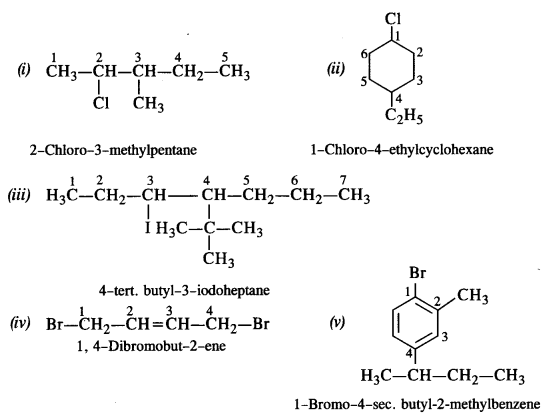
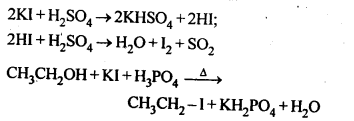






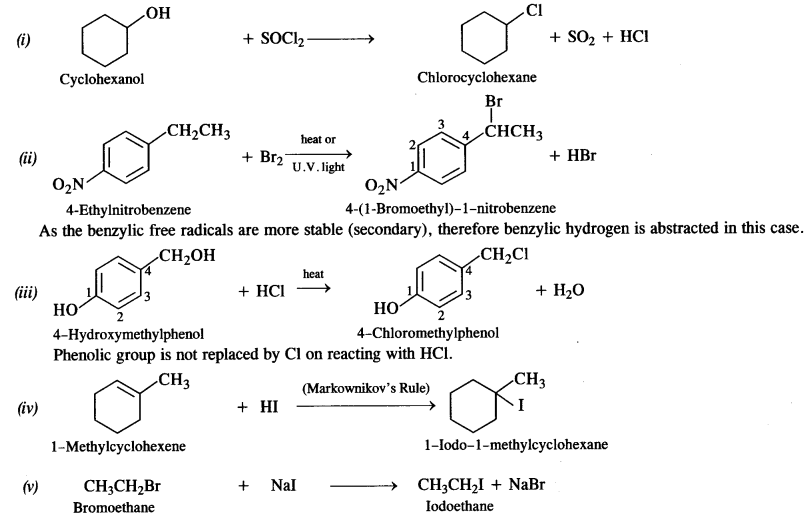


 is a secondary alkyl halide (2°). It is more reactive than the other isomer which is a tertiary alkyl halide (3°). The explanation is the same.
is a secondary alkyl halide (2°). It is more reactive than the other isomer which is a tertiary alkyl halide (3°). The explanation is the same.

